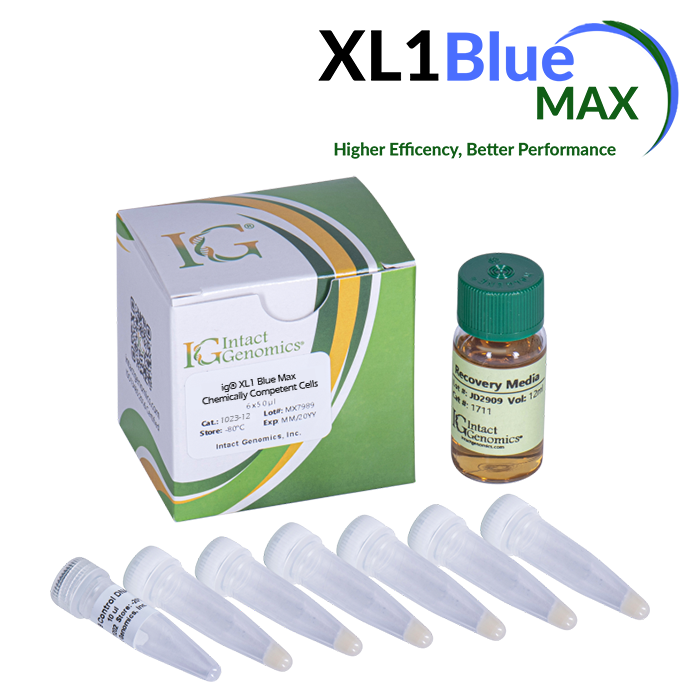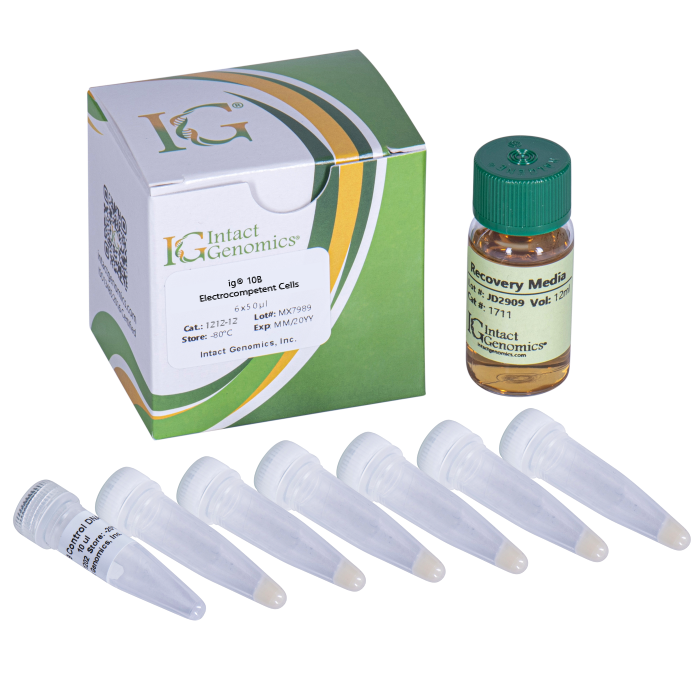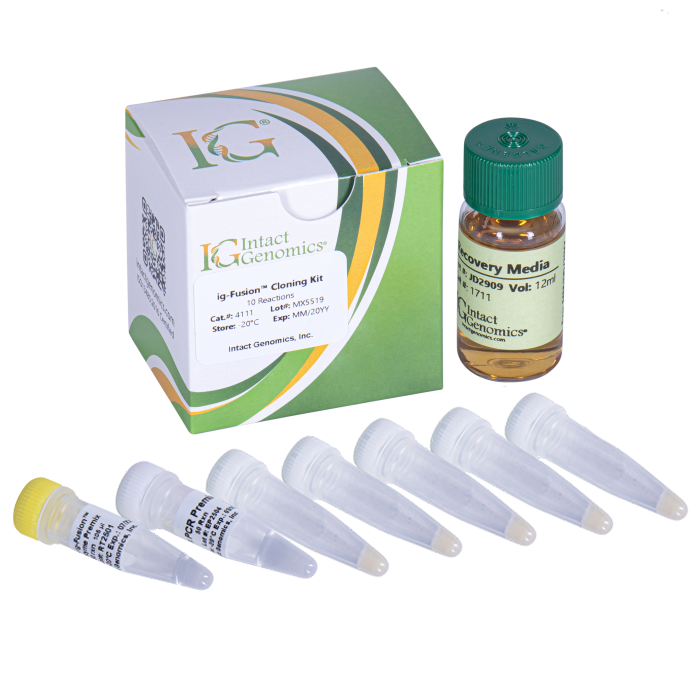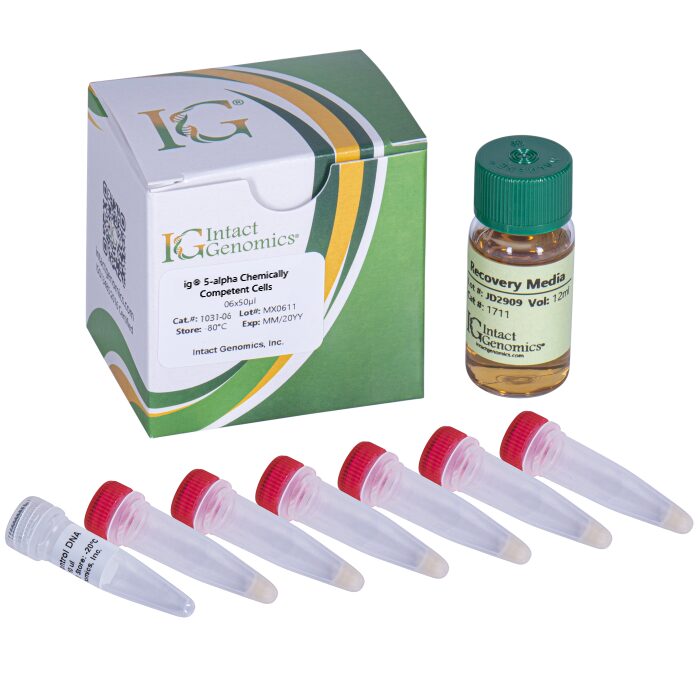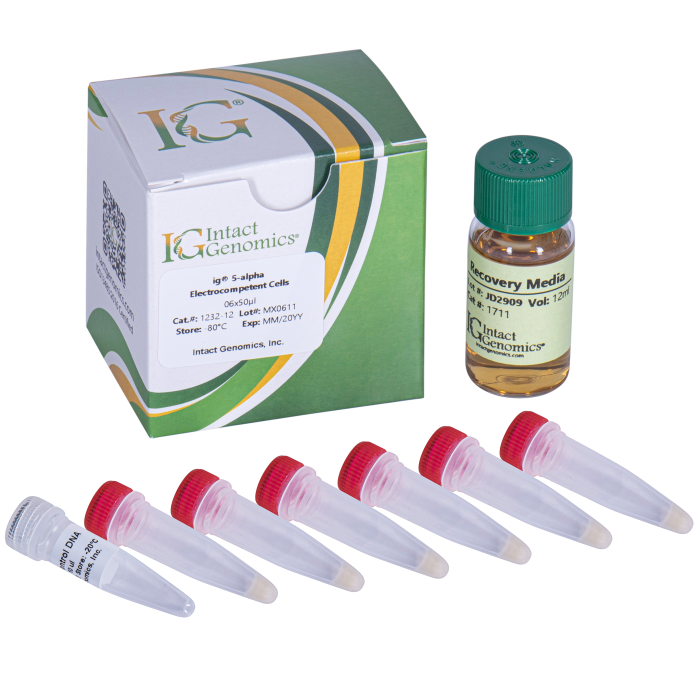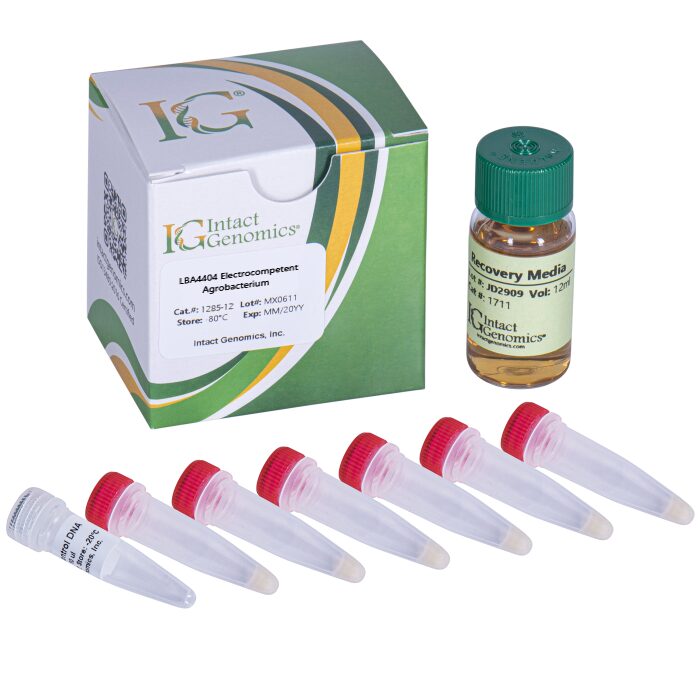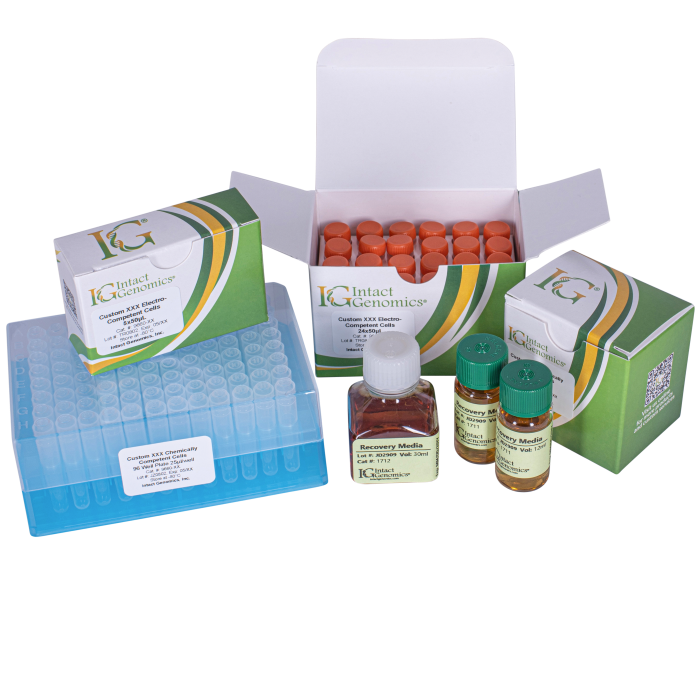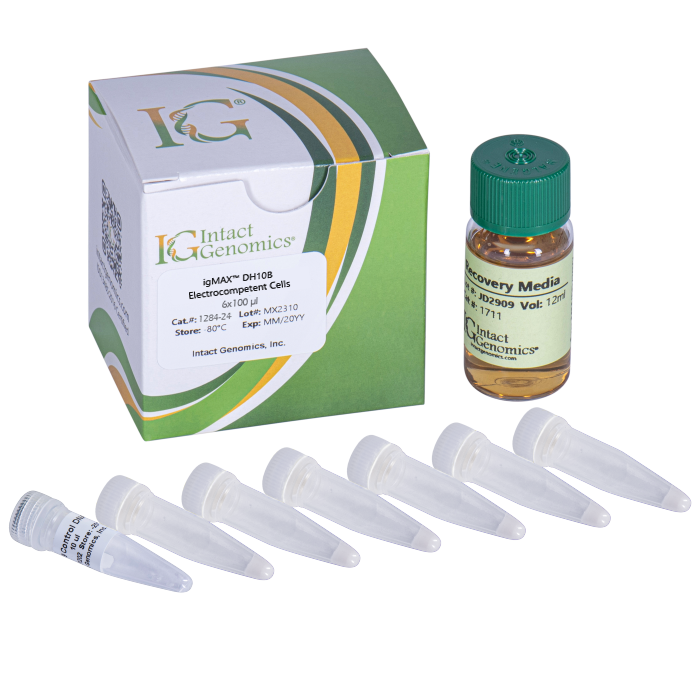High Efficiency ig® XL1 Blue Max chemically competent E. coli cells are suitable for the preparation of high quality plasmid DNA and single strand rescue of phagemid DNA.
ig® XL1 Blue Max Chemically Competent Cells
Price range: $139.00 through $232.00
Description
Intact Genomics (ig®) XL1 Blue Max chemically competent E. coli cells are suitable for high efficiency transformation in a wide variety of applications such as cloning and sub-cloning. These cells have the capability to allow for the preparation of high quality plasmid DNA, single strand rescue of phagemid DNA and blue/white screening. XL1 Blue Max cells provide superb transformation efficiency, significantly higher than any competitors similar product, allowing for increased opportunity for experimental success.
CUSTOM ALIQUOTS AVAILABLE
Specifications
Competent cell type: Chemically competent
Species: E. coli
Format: Tubes
Transformation efficiency: ≥1 x 1010 cfu/µg pUC19 DNA
Blue/white screening: Yes
Shipping condition: Dry ice
Reagents Needed for One Reaction
ig® XL1 Blue Max chemically competent cells: 50 µl
DNA (or pUC19 Control, 10 pg/µl): 1 µl
Recovery medium: 1 ml
Product Includes & Storage
ig® 10B competent cells: -80 ºC
pUC19 control DNA: -20 ºC
Recovery medium: 4 ºC
Genomic Features
ig® XL1 Blue Max chemically competent cells have the following features:
- XL-1 Blue Max cells are tetracycline resistant.
- XL1-Blue Max cells are endonuclease (endA) deficient, which greatly improves the quality of miniprep DNA
- XL1-Blue Max cells recombination (recA) deficient, improving insert stability
- Cleavage of cloned DNA by the EcoK endonuclease system is prevented by the hsdR mutation.
- Blue-white color screening via the lacIq Z∆M15 gene on the F´ episome
Genotype
recA1 endA1 gyrA96 thi-1 hsdR17 supE44 relA1 lac [F´ proAB lacIq Z∆M15 Tn10 (Tetr )]
Quality Control
Transformation efficiency is tested by using the pUC19 control DNA supplied with the kit and the high efficiency transformation protocol listed below. Transformation efficiency should be ≥1 x 1010 CFU/µg pUC19 DNA.
Untransformed cells are tested for appropriate antibiotic sensitivity.
General Guidelines
Follow these guidelines when using ig® XL1 Blue Max chemically competent E. coli.
- Handle competent cells gently as they are highly sensitive to changes in temperature or mechanical lysis caused by pipetting.
- Thaw competent cells on ice and transform cells immediately following thawing. After adding DNA, mix by tapping the tube gently. Do not mix cells by pipetting or vortexing.
Example Calculation of Transformation Efficiency
Transformation Efficiency (TE) is defined as the number of colony forming units (cfu) produced by transforming 1µg of plasmid into a given volume of competent cells.
TE = Colonies/µg/Dilution
Transform 1 µl of (10 pg/µl) pUC19 control plasmid into 50 µl of cells, add 950 µl of Recovery Medium. Dilute 10 µl of this in 990 µl of Recovery Medium and plate 50 µl. Count the colonies on the plate the next day. If you count 100 colonies, the TE is calculated as follows:
Colonies = 100
µg of DNA = 0.00001
Dilution = 50/1000 x 10/1000 = 0.0005
TE = 100/.00001/.0005 = 2.0 x 1010
1023-12 1023-24
Additional information
| µl | 6×50µl, 12×50µl, 24×50µl, 6×100µl, 12×100µl, 24×100µl, 6×200µl, 12×200µl, 1×96 well plate (20µl/well) |
|---|
Use this procedure to transform ig® XL1 Blue Max chemically competent cells. We recommend verifying the transformation efficiency of the cells using the pUC19 control DNA supplied with the kit. Do not use these cells for electroporation.
- Remove competent cells from the -80 °C freezer and thaw completely on wet ice (10-15 minutes).
- Aliquot 1-5 µl (1 pg-100 ng) of DNA to the chilled microcentrifuge tubes on ice.
- When the cells are thawed, add 50 μl of cells to each DNA tube on ice and mix gently by tapping 4-5 times. For the pUC19 control, add 1 µl of (10 pg/µl) DNA to a chilled microcentrifuge tube, prior to adding 50 µl of Mix well by tapping. Do not pipette up and down or vortex to mix, this can harm cells and decrease transformation efficiency.
- Incubate the cells with DNA on ice for 30 minutes.
- After 30 minute ice incubation, heat shock the cells at 42 °C for 45 seconds.
- Transfer the tubes to ice for 2 minutes.
- Add 950 µl of Recovery Medium or any other medium of choice to each tube.
- Incubate tubes at 37 °C for 1 hour at 210 rpm.
- Spread 50 μl to 200 μl from each transformation on
- Pre-warmed selection plates. We recommend plating two different volumes to ensure that at least one plate will have well-spaced colonies. For the pUC19 control, plate 50 μl on an LB plate containing 100 μg/ml ampicillin. Use sterilized spreader or autoclaved ColiRoller™ plating beads to spread evenly.
- Incubate the plates overnight at 37 °C.
5 Minute Transformation Protocol
The following procedure results in only ~10% of the transformation efficiency as the protocol listed above.
- Remove competent cells from the -80 °C freezer and thaw in your hand.
- Aliquot 1-5 µl (1 pg-100 ng) of DNA to the microcentrifuge tubes. Do not pipette up and down or vortex to mix, this can harm cells and decrease transformation efficiency.
- Incubate the cells with DNA on ice for 2 minutes.
- After 2 minute ice incubation, heat shock the cells at 42 °C for 45 seconds.
- Transfer the tubes to ice for 2 minutes.
- Add 950 µl of Recovery Medium at room temperature or any other medium of choice to each tube. Immediately spread 50 μl to 200 μl from each transformation on pre-warmed selection plates. We recommend plating two different volumes to ensure that at least one plate will have well-spaced colonies. For the pUC19 control, plate 50 μl on an LB plate containing 100 μg/ml ampicillin. Use sterilized spreader or autoclaved ColiRoller™ plating beads to spread evenly.
- Incubate the plates overnight at 37 °C.

